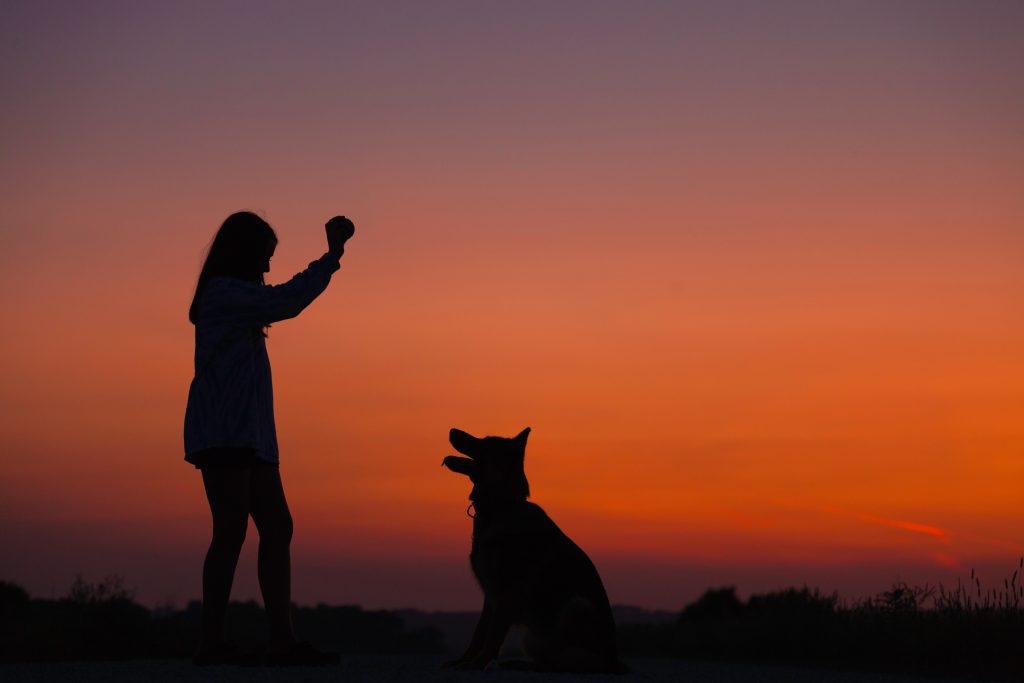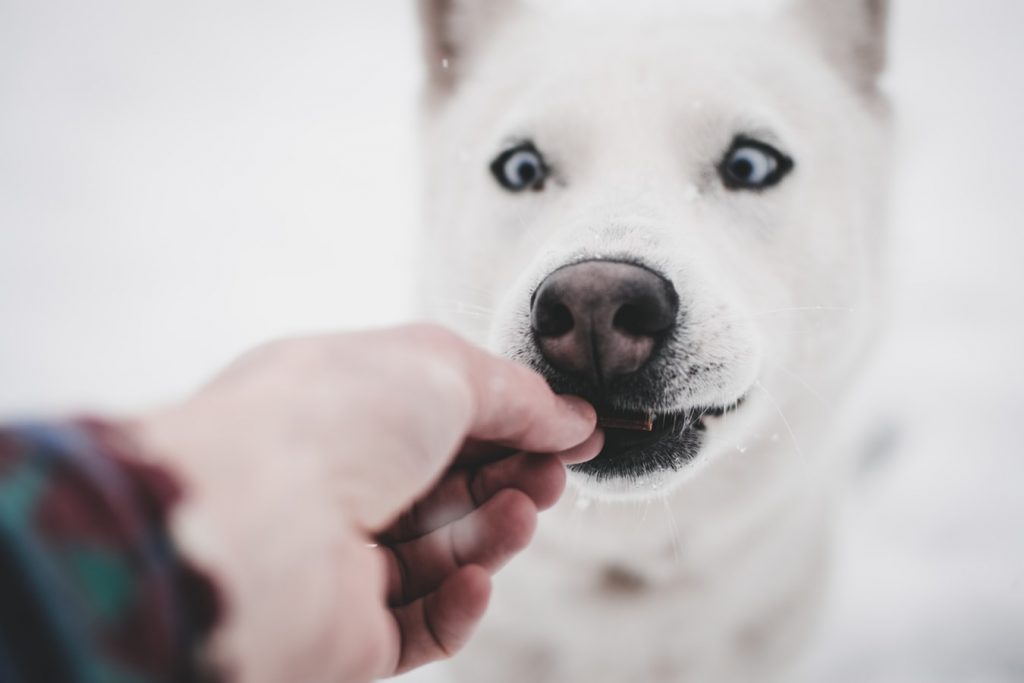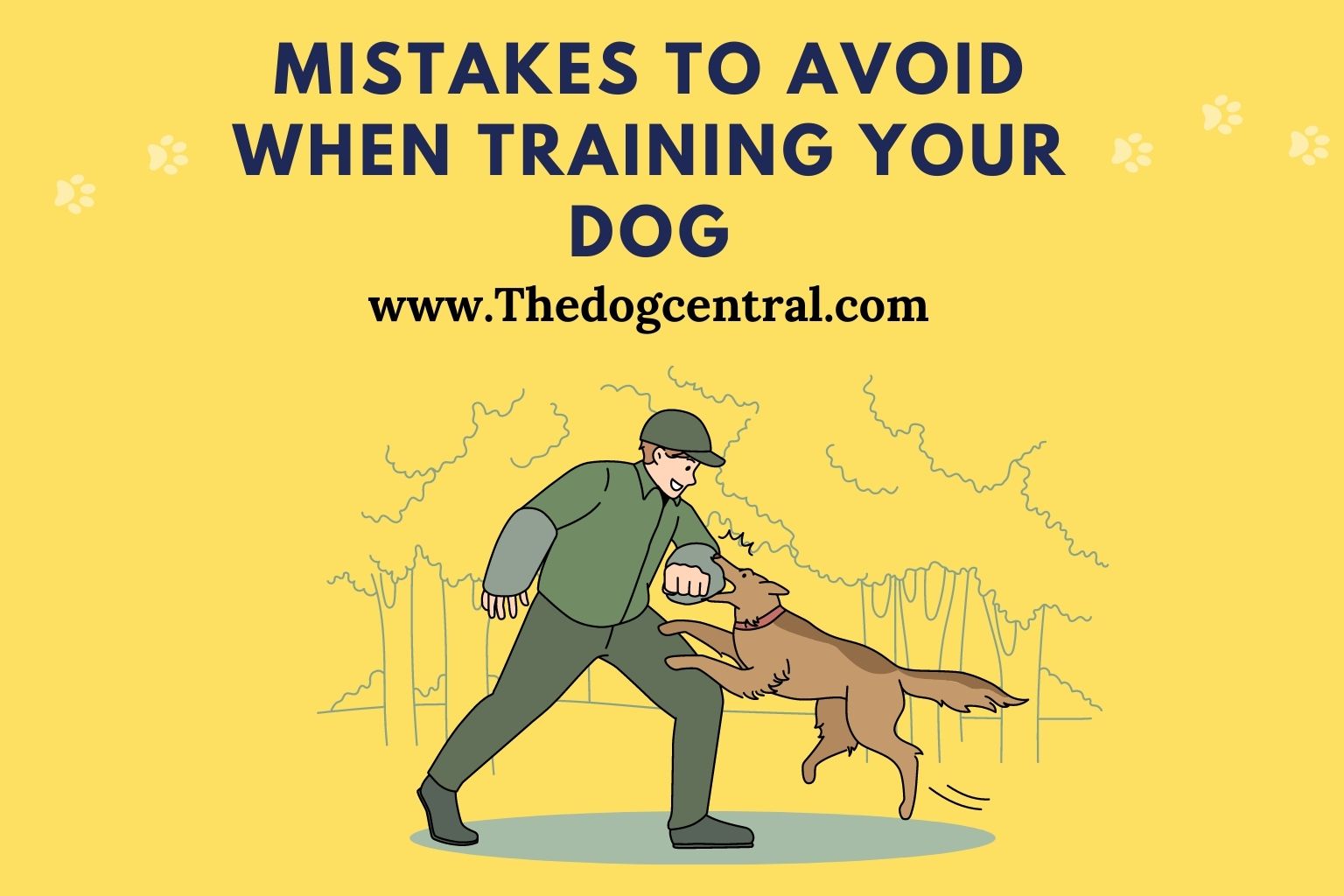Getting a dog means **training** is a must.
It’s not just to help you so that they do what you want and not to do tricks to impress other people, but training is vital to keep your dog safe.
Unless you train your dog to come back to you when you say and not to run off by the roads, then they’re not going to know. Training them also helps you too as it means no accidents in the house and less damage to your home.
It’s up to you how you want to train your dog, there are plenty of books to teach you, or you can take them to a training school, but either way, it will take time, and you’ll need a lot of patience, but it’s worth it in the end.
There are some common mistakes a lot of people make when training their dogs, so if you can avoid these, then you’re in with a good chance of having a well-trained best friend.
Inconsistency

When training your dog, one of the first and most important things you need to be is consistent.
You don’t want to confuse your dog, and they’ll never know right from wrong if you give them inconsistent responses. If you have decided on specific rules in your house, then you need to stick to them.
While sometimes it’s easier to give in and let them on the sofa or give them some of your food, if you don’t want them to do this as a general rule, then you need to stick to your guns.
If you let your dog on the sofa once or twice or you let them have some of your food, then you can’t be mad at them when they beg for food as they think that they’re going to get some and you can’t be mad at them for jumping on the sofa when they feel like it, because they won’t understand why.
Another thing to be careful of when it comes to consistency is that you only reward your dog when he or she fully does what you ask them to do. For example, if you ask your dog to stay but then they start moving before you’ve told them it’s okay too, then don’t reward them. They must do what you ask them entirely before you reward them. Otherwise, they will get confused and only do half a job next time too.
Impatience
Each dog is different, some cotton on to things pretty quickly, and others take more time to learn. If your dog is taking longer than you would hope to learn something, then it’s essential not to get frustrated with them. It might be that they are tired from too much training as it’s important to keep training sessions to about 10 to 15 minutes, and if you think that your dog is struggling, then break each behavior down into smaller chunks.
Whatever you do, make sure that you end the training session on a positive note, even if you feel frustrated.
Lack of training
You’ve got to keep practicing when training your dog, and the training never really stops. It is not something you can do once, and then it’s done; you have to train your dog regularly, even if they have got it down to a tee.
Have small training sessions once or twice a week and find fun things to teach your dog so that you both have a good time, and then you can also practice some of the old classics too.
Not Using Rewards Properly

When training your dog, you need to use rewards and praise. They need to know when they have done something right, and while telling them that they are good and congratulating them is important, it’s not enough.
You need to use something that they love as a training treat, so a little bit of chicken or their favorite biscuit. While some people think that using toys is the way to go so that they’re not rewarding with food, using toys can actually confuse the dog and make them think it’s playtime.
Only give your dog a treat once they have done what you have told them, and they have done it thoroughly. Then eventually, you can slowly cut down the treats you give them in your training sessions so that they don’t rely on their rewards, and they’ll do things just because you’ve asked them to.
Long sessions
While it’s important to be dedicated and committed to training your dog, you need to remember that your dog can get bored quickly and especially if you’re training them as a puppy.
If you have long training sessions, then it’s likely that your dog will get bored and frustrated, and they’ll view the whole thing as a negative experience rather than a positive one.
Training sessions should be about ten minutes maximum and only three times a week. You need to space out the sessions and make sure that there’s plenty of playtime in between them to keep your dog happy. If you do this, your dog should enjoy the training sessions and see it as fun and want to do more.
Not puppy training
Start training as soon as you get your dog home, no matter how old they are.
Some people think that there’s no point in training them when they’re little puppies as they won’t understand, but in fact, a dog is never too young or old to be training.
Don’t wait until your dog learns bad habits, and if while a puppy may not be ready to learn specific commands, you can start the training with house training and basic commands so that they know how to behave in your home. Then you can move onto more tricks and advanced training.
